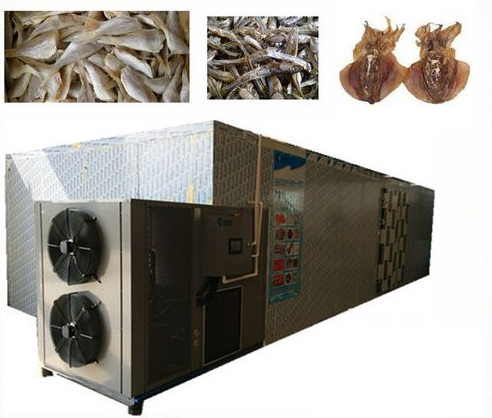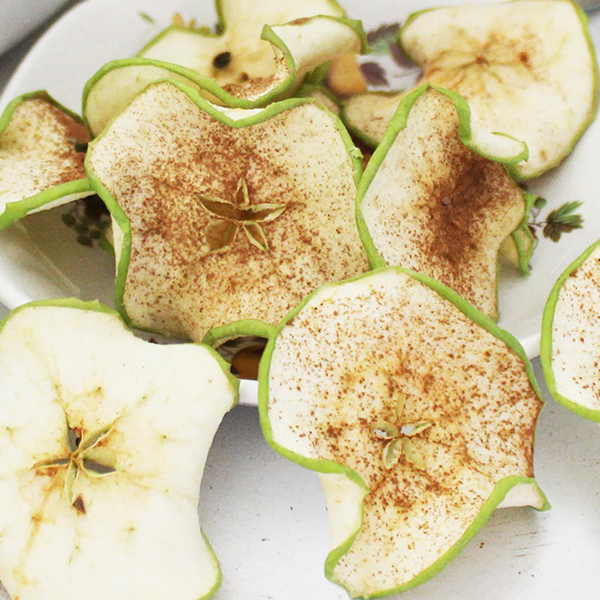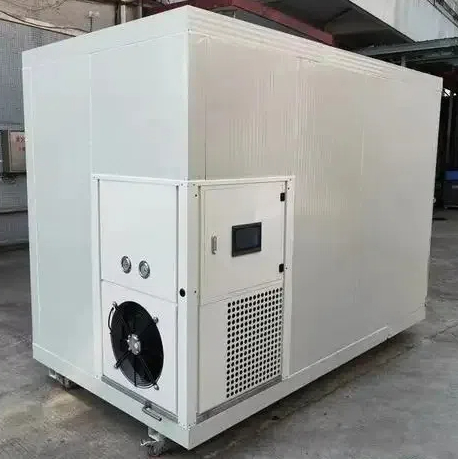
Content Menu
● Understanding Heat Pump Dryers
>> Advantages of Heat Pump Dryers
● Key Features to Consider
>> 1. Capacity
>> 2. Temperature Control
>> 3. Timer Functionality
>> 4. Noise Level
>> 5. Tray Design and Material
>> 6. Energy Consumption
● Choosing the Right Model
● Cost Considerations
● Maintenance Tips
● Tips for Effective Food Drying
● Conclusion
● FAQ
>> 1. What types of food can I dry using a heat pump dryer?
>> 2. How does a heat pump dryer differ from a conventional dehydrator?
>> 3. Are heat pump dryers noisy?
>> 4. Can I set different temperatures for different foods?
>> 5. Is it worth investing in a heat pump dryer?
● Citations:
When it comes to food processing, having the right equipment is crucial. For businesses and individuals looking to preserve food efficiently, the heat pump dryer stands out as a versatile option. This article will explore the key features, benefits, and considerations when selecting the best value for money heat pump dryer, particularly for food drying applications.

Understanding Heat Pump Dryers
Heat pump dryers utilize a refrigeration cycle to remove moisture from food items. They are highly efficient and can operate at lower temperatures compared to traditional dryers, preserving the nutritional quality and flavor of the food.
Advantages of Heat Pump Dryers
- Energy Efficiency: Heat pump dryers consume less energy than conventional dryers due to their ability to recycle hot air. This not only reduces electricity costs but also minimizes environmental impact.
- Gentle Drying: The lower drying temperatures help maintain the integrity of delicate foods, making them ideal for fruits, vegetables, and herbs. This gentle approach preserves essential vitamins and minerals that can be lost in higher temperature drying processes.
- Versatility: These dryers can be used for various food types, allowing users to dry multiple items simultaneously. From herbs and spices to meats and fish, heat pump dryers cater to a wide range of drying needs.
- Cost Savings: Although the initial investment may be higher, the long-term savings on energy bills can make them economically advantageous. Additionally, the ability to dry foods in-house can reduce costs associated with purchasing pre-dried products.
Key Features to Consider
When selecting a heat pump dryer, consider the following features:
1. Capacity
The capacity of a dryer is crucial depending on your needs.
- Home Use: A smaller capacity (around 5-10 kg) is sufficient for home users who want to dry fruits or vegetables for personal consumption.
- Commercial Use: For businesses, larger capacities (15 kg and above) are recommended to handle bulk drying. This is particularly important for restaurants or food manufacturers that require consistent supply.
2. Temperature Control
Flexible temperature settings allow you to adjust the drying conditions based on the type of food being processed. Look for models that offer precise temperature controls ranging from 30°C to 70°C. Some advanced models even provide specific programs tailored for different types of food.
3. Timer Functionality
A built-in timer ensures that you can set your drying process and not worry about over-drying your food. This feature is especially useful for busy individuals or businesses that may not be able to monitor the drying process constantly.
4. Noise Level
Consider the noise level of the dryer, especially if it will be used in a residential area or small workspace. Some models are designed to operate quietly, making them suitable for home use without disturbing daily activities.
5. Tray Design and Material
The design of trays affects airflow and drying efficiency:
- Material: Stainless steel trays are more durable than plastic ones and are easier to clean.
- Shape: Rectangular trays often provide better airflow compared to round ones, ensuring even drying across all items.
6. Energy Consumption
Look for models with high energy efficiency ratings. Some heat pump dryers come with energy-saving modes that further reduce power usage during operation.

Choosing the Right Model
To find the best value for money heat pump dryer, compare different models based on features and price. Here are some recommended models:
- Cosori Food Dehydrator: Known for its efficiency and user-friendly design, this model is ideal for home users looking for a reliable dehydrator.
- Excalibur 3926TCDB: Best for large capacities with excellent airflow distribution, making it perfect for commercial applications where bulk drying is needed.
- Nesco Snackmaster Pro: A budget-friendly option that does not compromise on performance; it's great for beginners wanting to explore food drying.
Cost Considerations
While heat pump dryers may have a higher upfront cost compared to traditional dehydrators, their energy efficiency leads to significant savings over time. Calculate potential energy costs based on usage patterns to determine long-term savings.
For example, if you typically spend $100 monthly on energy costs with a conventional dryer, switching to a heat pump dryer could reduce that bill by 30% or more due to its efficiency—resulting in savings of $30 monthly or $360 annually.
Maintenance Tips
Proper maintenance is essential for ensuring longevity and optimal performance of your heat pump dryer:
- Regular Cleaning: Clean the filters regularly according to manufacturer instructions to prevent dust buildup that can affect performance.
- Check Seals: Inspect door seals periodically; damaged seals can lead to energy loss and inefficient drying.
- Monitor Performance: Keep an eye on drying times and temperatures; if you notice significant changes, it may indicate maintenance needs.
Tips for Effective Food Drying
To maximize the effectiveness of your heat pump dryer:
- Pre-treat Foods: Certain foods benefit from pre-treatment (e.g., blanching vegetables) before drying to enhance flavor and color retention.
- Cut Uniformly: Ensure that all pieces of food are cut uniformly in size; this promotes even drying and prevents some pieces from becoming over-dried while others remain moist.
- Avoid Overloading: Do not overcrowd trays; this can obstruct airflow and lead to uneven drying results.
Conclusion
Choosing the best value for money heat pump dryer requires careful consideration of your specific needs, including capacity, temperature control, energy efficiency, and maintenance requirements. By investing in a quality model that meets your requirements, you can ensure effective food preservation while enjoying cost savings in the long run. The versatility of heat pump dryers makes them an excellent choice for both home users looking to preserve their harvests and businesses aiming to provide high-quality dried products.

FAQ
1. What types of food can I dry using a heat pump dryer?
You can dry various foods such as fruits (apples, bananas), vegetables (carrots, tomatoes), herbs (basil, oregano), meats (beef jerky), and even fish using a heat pump dryer.
2. How does a heat pump dryer differ from a conventional dehydrator?
Heat pump dryers use lower temperatures and recycle hot air through a refrigeration cycle, making them more energy-efficient while preserving food quality better than conventional dehydrators which often rely on higher temperatures.
3. Are heat pump dryers noisy?
Noise levels vary by model; however, many modern heat pump dryers are designed with noise reduction technology and operate quietly enough for home use without disturbing daily activities.
4. Can I set different temperatures for different foods?
Yes, most heat pump dryers come with adjustable temperature settings that allow you to customize drying conditions based on the type of food being dried—ensuring optimal results across various items.
5. Is it worth investing in a heat pump dryer?
Yes, despite a higher initial cost compared to traditional dehydrators or ovens, their energy efficiency, versatility in food types they can handle, and overall performance make them a worthwhile investment for both home users and commercial applications focused on food preservation.
Citations:
[1] https://www.goodhousekeeping.com/uk/product-reviews/electricals/g25572057/best-tumble-dryers/
[2] https://www.lowes.com/n/buying-guide/best-food-dehydrator-buying-guide
[3] https://pleasanthillgrain.com/resources/dehydrators-buying-guide
[4] https://www.youtube.com/watch?v=9DSGcVhjHEc
[5] https://www.youtube.com/watch?v=l4zqItYRrqY
[6] https://www.istockphoto.com/photos/food-dehydrator
[7] https://www.mumsnet.com/swearsby/best-heat-pump-tumble-dryers
[8] https://www.consumer.org.nz/products/dehydrators/guide
[9] https://aradmachineryco.com/article/Food-dehydrator-buying-guide
[10] https://www.youtube.com/watch?v=mtDzdYoyeR8











